President Trump holds up a board showing the tax rates that countries are imposing on the US and their corresponding taxes (Photo: REUTERS)
46% for goods from Vietnam
"This is our declaration of independence," US President Donald Trump emphasized during a ceremony in the White House Rose Garden early on April 3, Vietnam time. The US leader held up a board detailing each reciprocal tax rate that will be applied to dozens of economies, including Vietnam.
The “base” tariff rate applied to all goods imported into the US is 10%. Some countries in this group include the UK, Brazil, Singapore, Australia, Chile, Argentina, Saudi Arabia, etc.
The European Union (EU), Malaysia, Japan, South Korea, and India are subject to tariffs of 20-26%. Notably, China and Vietnam are among the groups subject to the highest reciprocal tariffs, at 34% and 46%, respectively.
The sign Trump held also argued for reciprocal tariffs, which are tariffs that other economies impose on US goods. For example, Vietnam, China and the EU impose tariffs of 90%, 67% and 39% on US goods, respectively. There was no specific explanation for Washington’s calculation.
Reuters news agency quoted an unnamed senior US official as saying that the basic tariff of 10% will take effect from April 5. Meanwhile, for economies subject to higher tariffs, implementation will begin from April 9.
Also in Southeast Asia, Thailand is subject to a 36% tax because it imposes a 72% tax on US goods, followed by Indonesia (32%, 64%), Malaysia (24%, 47%), the Philippines (17%, 34%), and Singapore (10%, 10%).
Notably, Canada and Mexico are not on the list of countries subject to reciprocal tariffs by the US this time.
According to information released by the White House, the reciprocal tariffs do not apply to certain items, including copper, pharmaceuticals, semiconductors, lumber, gold, energy and "certain minerals not available in the United States."
A boost for the US economy?
Speaking in the Rose Garden on the White House grounds, President Trump criticized what he said were “much higher” import tariffs on goods from the United States than the tariffs the world’s largest economy imposes on other countries on its exports.
In addition to the base 10% tariff, the Trump administration will also impose reciprocal tariffs on other countries that the White House considers to have a trade imbalance with the United States.
The tariff would be half the rate those countries charge on US exports.
Higher US tariffs would hit foreign entities that sell more goods to the US than they buy.
Washington expects other countries to lower tariffs and other trade barriers that it says led to a $1.2 trillion trade imbalance last year.
However, instead of creating an immediate boost for the US economy, US media opinion believes that the new tariffs will damage many companies whose products depend on the global supply chain because they may be forced to raise prices or suffer thinner profit margins.
US stock futures fell shortly after Mr Trump announced the reciprocal tariffs, with S&P 500 futures down 1.7% and Nasdaq futures down nearly 2%.
US trading partners are expected to respond with countermeasures of their own, which could lead to significantly higher prices on everything from bicycles to wine, Reuters reported.
Economists outside the United States have long warned that tariffs could slow the global economy, increase the risk of recession and add thousands of dollars to the cost of living for the average American family. Meanwhile, businesses have complained that Mr. Trump’s barrage of tariff threats has made it difficult to plan their operations.
Alex Jacquez, director of policy and advocacy at Groundwork Collaborative, a left-leaning public policy think tank, said the process of implementing a countervailing tax would be administratively complex, given that there are tens of thousands of tax codes that specify tax rates for many different types of products.
Establishing reciprocal tariffs for entire product categories with each trading partner is completely unfeasible within the administrative capacity of the United States.
Some other experts believe that the real goal of this policy is not necessarily to force companies to move production back to the US or generate more revenue for the government, but mainly to pressure other countries to sign trade agreements that are favorable to the Trump administration.
Earlier on April 2, the US government said a separate set of tariffs on imported cars that Mr. Trump announced last week would take effect starting April 3.
Countries react cautiously
* Responding to the above move by the US, British Business and Trade Secretary Jonathan Reynolds issued a statement on April 2 affirming that London is still determined to sign an economic agreement with Washington to be able to "lighten" the 10% tax rate applied to exports to the US.
“Our approach is to remain calm and work to build on this agreement, which we hope will mitigate the impact of what has been announced,” said Minister Reynolds in a statement.
According to President Trump, the UK will be among the countries facing the lowest tariffs on imports into the US, while dozens of other countries face higher tariffs.
However, the UK government official also made clear: “We have many tools… and we will not hesitate to act.” London “will continue to engage with UK businesses” to “assess the impact of any further steps we take.”
Also on April 2, Italian Prime Minister Giorgia Meloni criticized the new US tariffs on imports from the EU as “wrong”, but warned that the trade war would only weaken the West.
“The US tariffs against the EU are a measure that I consider wrong and not suitable for any party. We will do everything possible to reach an agreement with the US to prevent a trade war that will inevitably weaken the West in favor of other global players,” the Italian Prime Minister wrote.
From Sydney, Prime Minister Anthony Albanese spoke out to affirm that the US president's trade tariff policy towards close ally Australia is "completely unfounded", not "the act of a friend" and will change the perception of the bilateral relationship.
However, Mr Albanese affirmed that Australia will not impose retaliatory tariffs on the US.
Meanwhile, the White House confirmed on the same day that “the 10% tax rate will take effect from 0:01 on April 5 (11:01 on the same day Hanoi time), while higher tax rates for different partners will take effect from 0:01 on April 9 (11:01 on the same day Hanoi time)”./.
What is a countervailing tax? A reciprocal tariff is a tariff or trade restriction that one country imposes on another in response to a similar tariff on its goods. Reciprocal means "to give and take", sometimes with an equal or lower response tariff. The idea behind reciprocal tariffs is to create a balance in trade between countries. If one country increases tariffs on goods from another country, the affected party can respond by imposing its own tariffs on imports from the other country. The move is intended to protect local businesses, preserve jobs, and correct trade imbalances. However, reciprocal tariffs are sometimes used as a negotiating tool in trade disputes or to encourage countries to reduce or eliminate tariffs on imports from other countries. As a consequence, reciprocal tariffs can lead to increased trade barriers and even trade wars that negatively impact both economies. Such situations can disrupt supply chains, raise prices for consumers and slow economic growth. It is important that countries communicate openly and work together to resolve trade issues, rather than resorting to reciprocal tariffs. |
According to Tuoi Tre Newspaper
Source: https://tuoitre.vn/tong-thong-my-cong-bo-chinh-sach-thue-quan-cao-hon-10-voi-hang-chuc-quoc-gia-20250403060350547.htm
Source: https://baolongan.vn/tong-thong-my-cong-bo-chinh-sach-thue-quan-cao-hon-10-voi-hang-chuc-quoc-gia-a192826.html


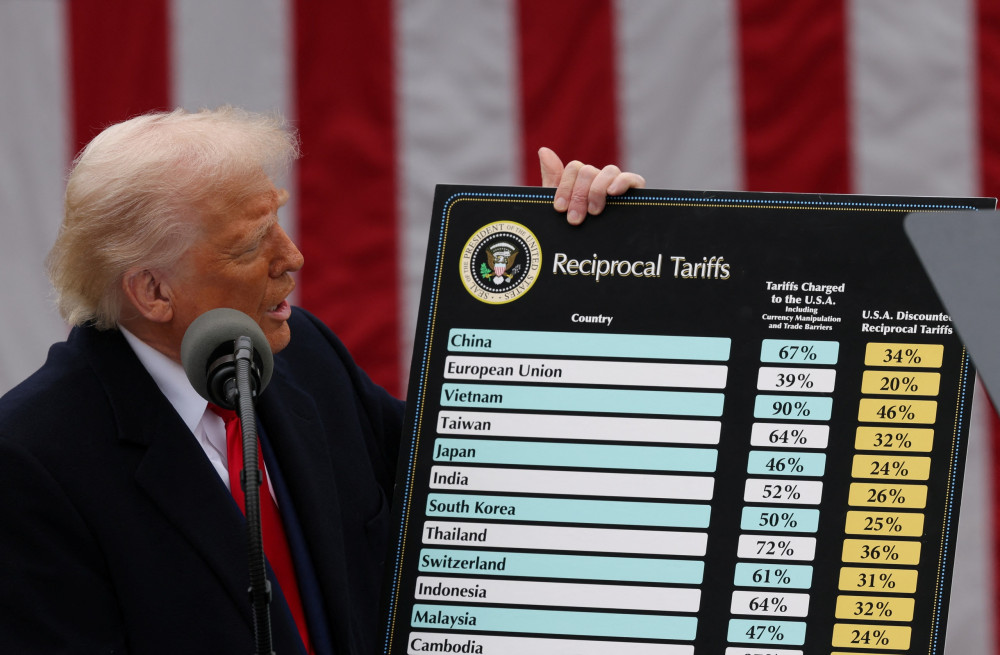
![[Photo] Prime Minister Pham Minh Chinh receives Swedish Minister of International Development Cooperation and Foreign Trade](https://vphoto.vietnam.vn/thumb/1200x675/vietnam/resource/IMAGE/2025/5/12/ae50d0bb57584fd1bbe1cd77d9ad6d97)


![[Photo] Prime Minister Pham Minh Chinh works with the Standing Committee of Thai Binh Provincial Party Committee](https://vphoto.vietnam.vn/thumb/1200x675/vietnam/resource/IMAGE/2025/5/12/f514ab990c544e05a446f77bba59c7d1)

![[Photo] Prime Minister Pham Minh Chinh starts construction of vital highway through Thai Binh and Nam Dinh](https://vphoto.vietnam.vn/thumb/1200x675/vietnam/resource/IMAGE/2025/5/12/52d98584ccea4c8dbf7c7f7484433af5)












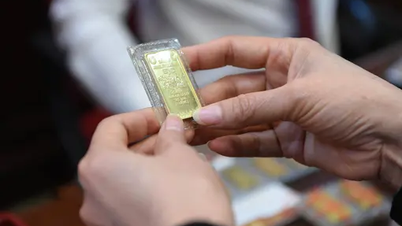



































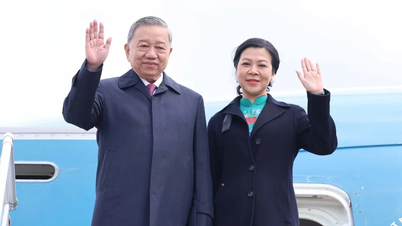
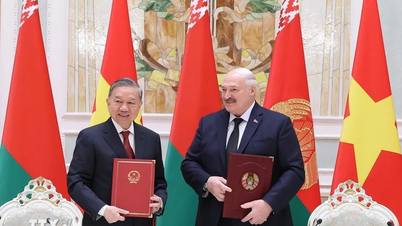













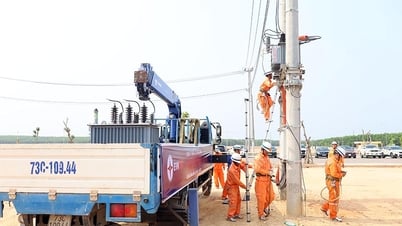


















Comment (0)